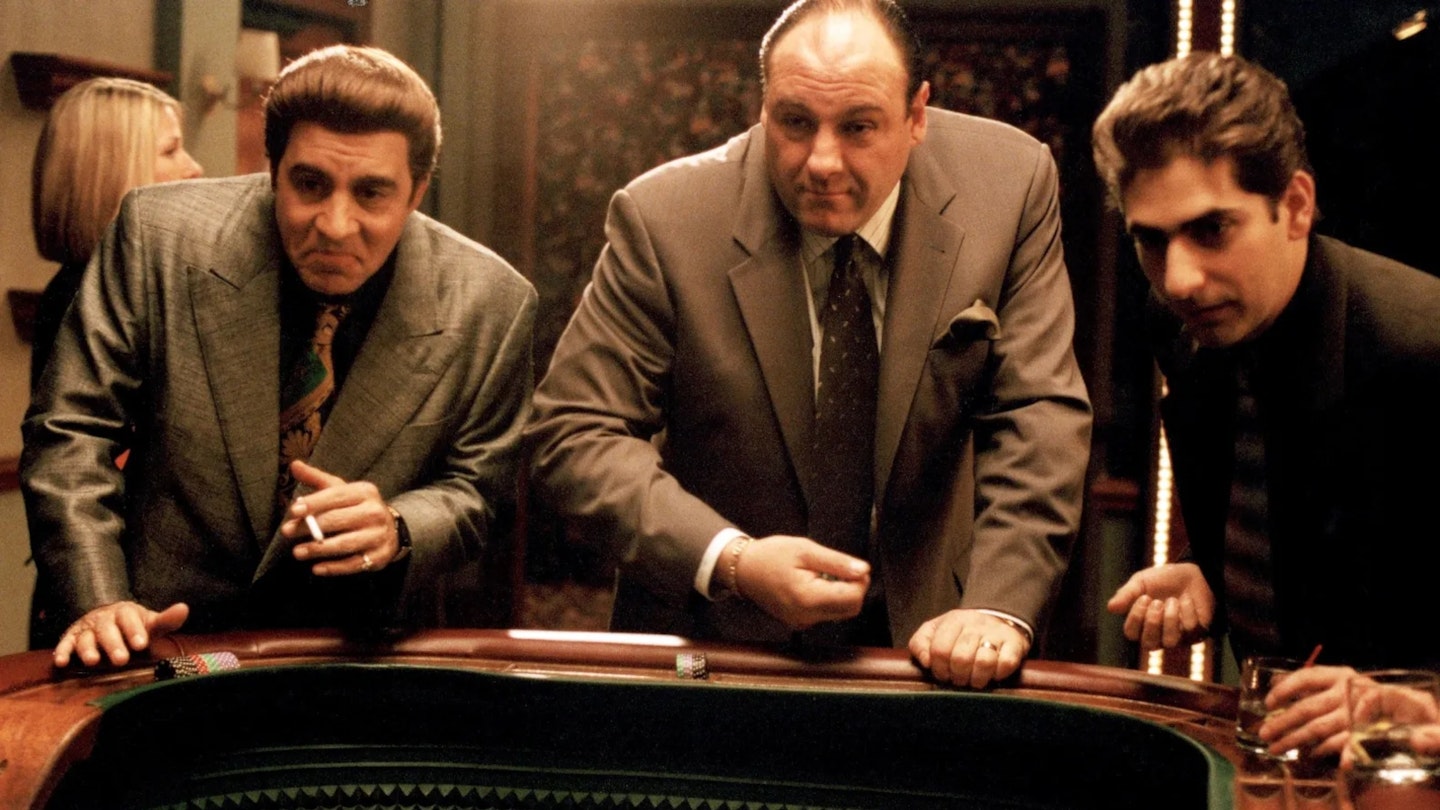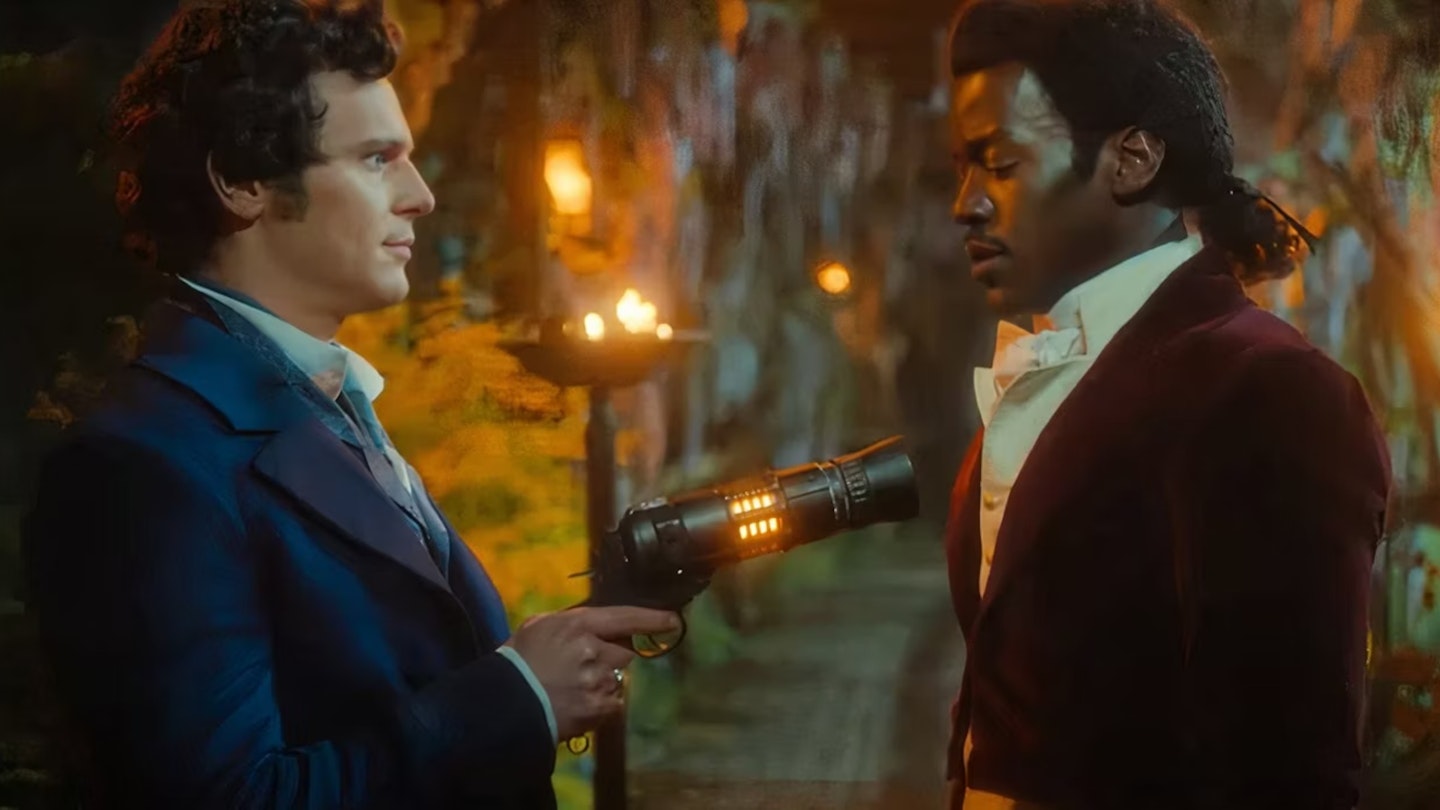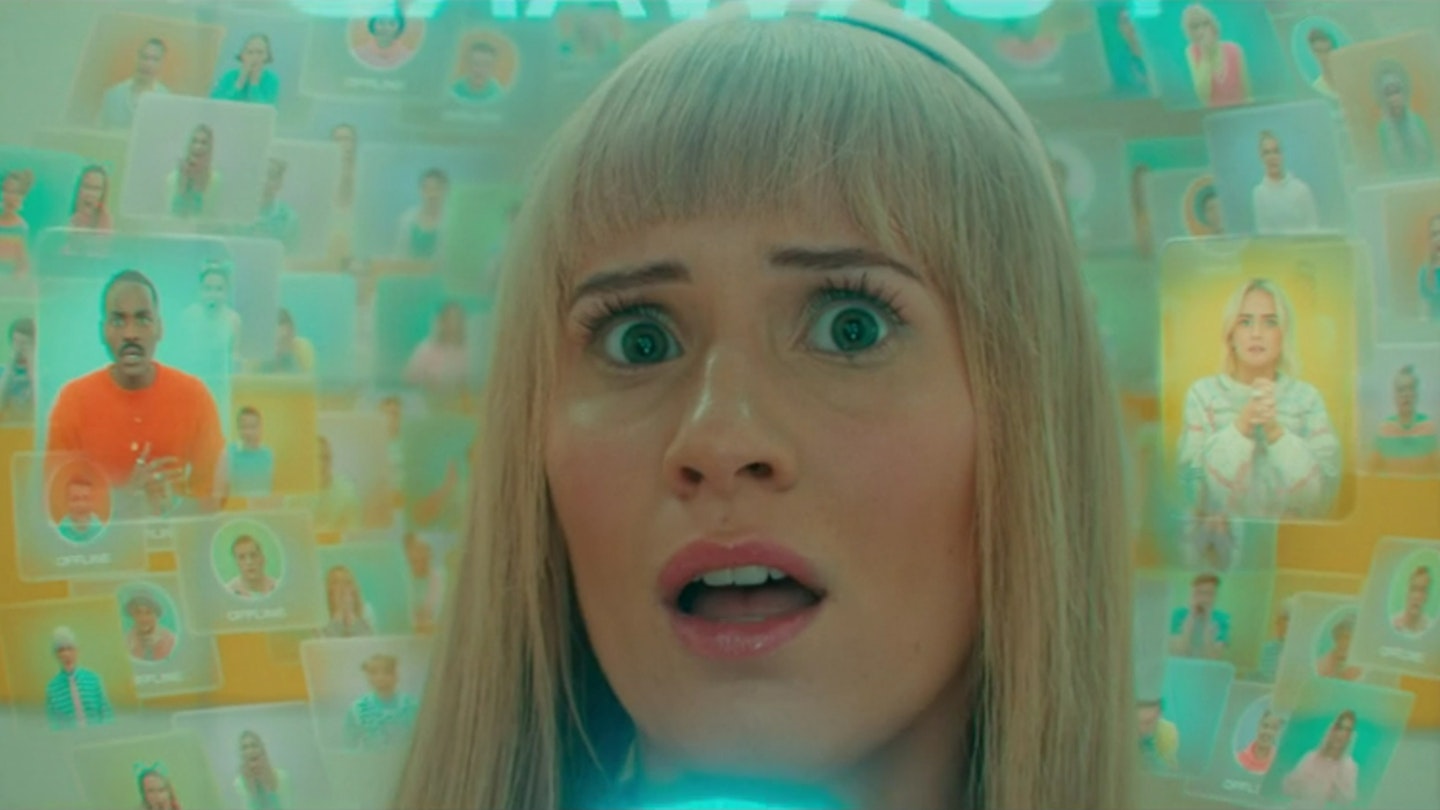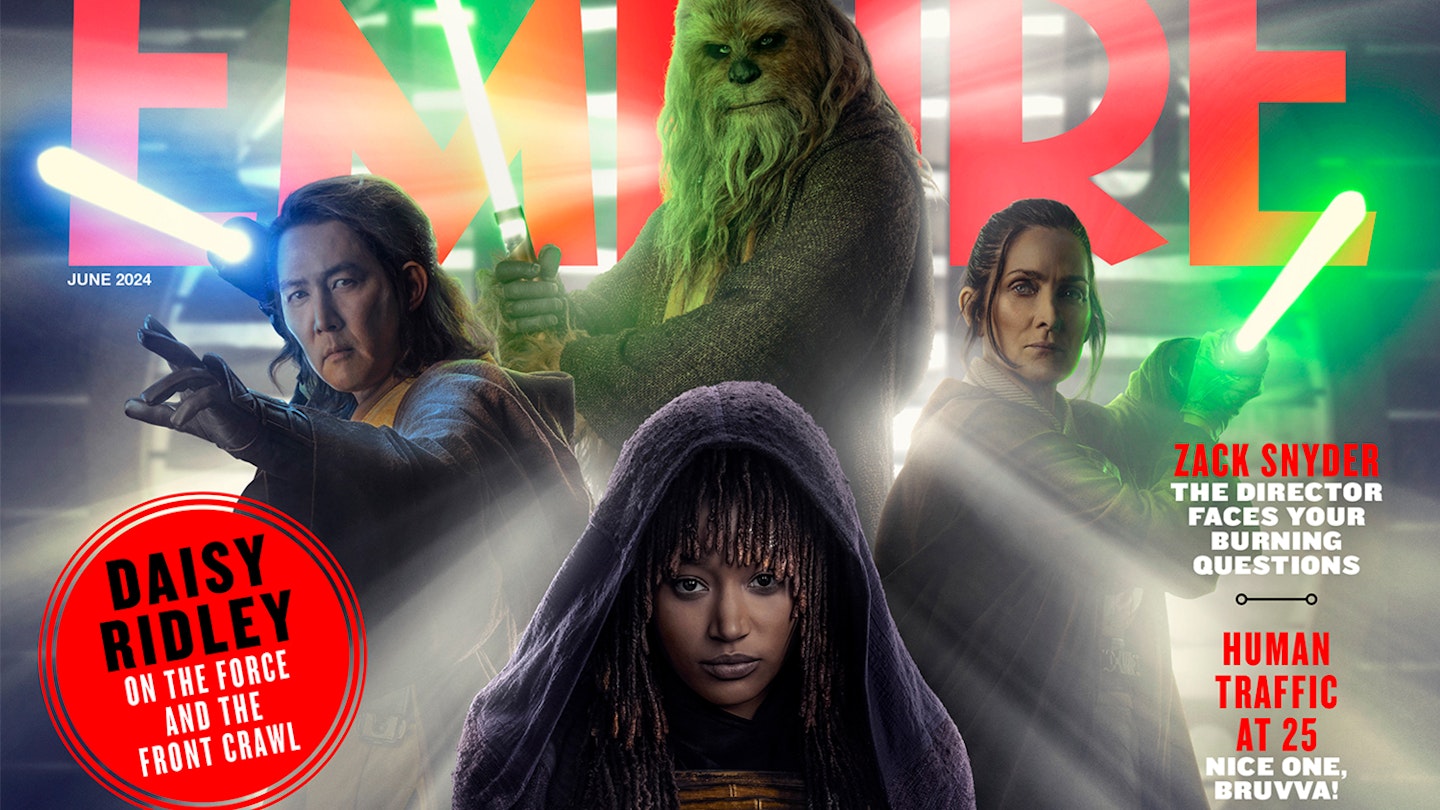Contains mild plot spoilers for ‘Wild Blue Yonder’
No sonic screwdriver. No TARDIS. No city-razing destruction, nor stupefyingly cute alien critters. As Doctor Who episodes go, ‘Wild Blue Yonder’ couldn’t be more different from the show’s blockbuster comeback, ‘The Star Beast’, if it tried. Last week’s adventure was Who at the peak of its silly, sugar-rush sci-fi powers: a spectacular kick-off to the show’s 60th anniversary celebrations, precision-tooled to dazzle newbies (Whobies?) and dyed-in-the-wool Whovians alike. This week’s, however — essentially a two-hander — is an insular Gothic chamber piece that goes toe-to-toe with Alien in the spaceship-as-haunted-house stakes. Invoking everything from NuWho favourites ‘Midnight’ and ‘Listen’ to sci-fi horror classics Event Horizon and The Thing, Russell T Davies strips everything back here to remind viewers at home that there ain’t no bottle episode like a Doctor Who bottle episode.
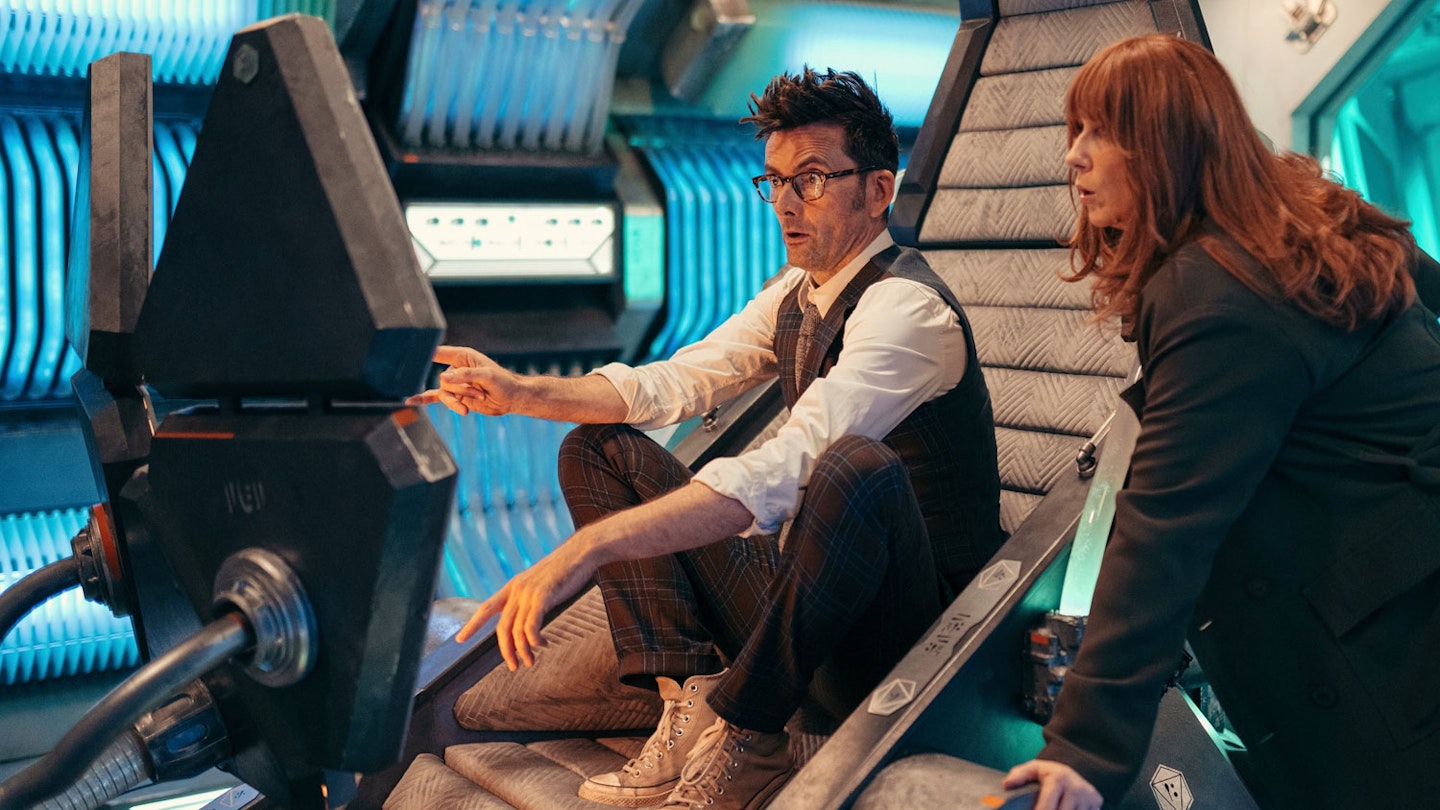
Arriving under a shroud of sworn secrecy (even press didn’t see this one until it aired), speculation had been rife about exactly what ‘Wild Blue Yonder’ would be. Rumours of a multi-Doctor story — Peter Capaldi, Matt Smith, Jodie Whittaker: you name ’em and someone had an in-depth Twitter/X thread red-stringing together a theory — abounded. But while technically this is a multi-Doctor story (and a multi-Donna one at that), it’s not one in the way anybody would have expected. And honestly, amid a landscape of disposable cameos and inconsequential fan-service, that the secrecy is in aid of storytelling rather than stunt casting is a blessed relief.
A comical cold open sees the Doctor (David Tennant) and a newly memory-restored Donna (Catherine Tate) flung back to England, circa 1666. There, the duo catalyse Sir Isaac Newton’s (It’s A Sin’s Nathaniel Curtis) discovery of ‘mavity’ (a communicational mishap) and the Doctor’s discovery of bisexuality (“He was hot, wasn’t he?”). But a classic ‘Doctor-meets-historical-figure-and-hijinks-ensue’ caper this is not. And before long, the Doctor and Donna find themselves stranded aboard a seemingly abandoned spaceship harbouring a threat so terrifying that even the TARDIS has done a runner.
A distillation of the show’s essential nature.
The eerie, empty (save for glacially slow Hitchhiker’s Guide To The Galaxy-homaging Chekhov’s robot Jimbo), seemingly endless spacecraft corridors and wheezing hydraulic pistons of ‘Wild Blue Yonder’ represent a stark counterpoint to the crashy, bangy, flashy Meepiness of ‘The Star Beast’. A sublime combination of pneumatic practical effects, soundstages, and nifty CGI made possible by that sweet new Disney dollar, the distinctly Nostromo-esque sense of isolation about the ship aptly evokes the abyss of the episode’s edge-of-the-universe setting. It’s a spatial oddity that serves the plot and augments the tone of the piece perfectly, centralising our focus on the Doctor, Donna, and their unique bond as the uncanny threat they face is slowly revealed. That threat? Why themselves, of course. Sort of.
Revealed in a properly creepy sequence that starts with the slow-dawning realisation that something isn’t quite right and climaxes with an injection of out-and-out Cronenbergian body horror, the ‘Not-Things’ are Weeping Angel-level nightmare fuel. Cosmic shapeshifters bent on universal destruction, the demonic doppelgängers — brought to life with palpable, dead-eyed menace by a multi-roling Tennant and Tate — are able to mimic the Doctor and Donna’s form, manner, and even memories.
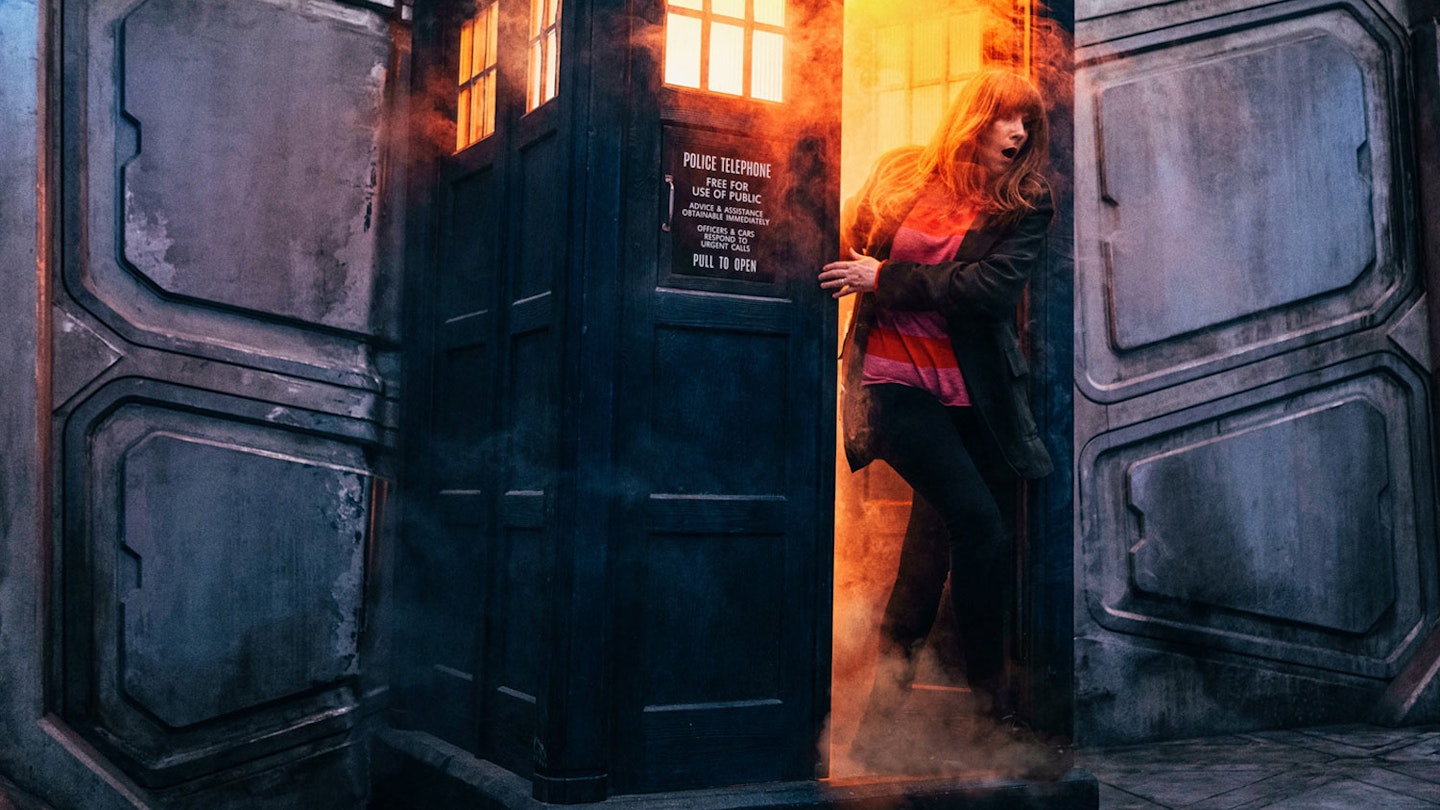
This set-up leads to a succession of intricately written “I know I’m me but how do I know you’re you?”-type exchanges — including one particularly fiendish bait-and-switch — that really allow Tate and Tennant to flex their acting chops, underlining their inimitable chemistry in the process. It’s also an opportunity for Davies to really hammer home that this is the Fourteenth Doctor, not the Tenth — and Donna Temple-Noble with a family waiting for her at home, not Donna from Chiswick gadding about with a two-hearted spaceman.
One particular exchange, in which canon-reshaping events of the Chris Chibnall era of the show come to the fore, allows Tennant to really click through the gears as he embodies elements of the Doctors who’ve been and gone since last time around: Smith’s wistful longing, Capaldi’s bone-deep grief, Whittaker’s emotional vulnerability. In about 30 seconds, several years of head-spinning exposition is simply, beautifully reframed. The Doctor doesn't really know who they are anymore, running from reckoning with the weight of all that they’ve seen and done, hoping against hope for somebody else out there to understand — if even just for a little while. No matter whether you’re a hardcore Whovian or don’t so much as carry a provisional TARDIS licence, if you’re looking for a distillation of the show’s essential nature, you’d struggle to find one better than this.
‘Wild Blue Yonder’ is a brutally simple, slickly executed high concept that we’ve seen iterative versions of before in OG Tennant/Tate-era fan favourites ‘Midnight’ and ‘Waters Of Mars’. But, especially when considered in the context of Who’s recent turbulent history, its use here — in a conversation-heavy hour of TV that digs deep into the past 15 years of the show both on and off screen — feels utterly singular. Giving folks the Doctor, with their plucky companion and techno-babble and eccentric wardrobe is easy, Davies seems to be saying: anyone can do it. But without genuine emotion — without heart — all you’ve really got is a pale imitation of something truly great, iconography and nothing more. Lucky for us, then, that by the time the credits roll there can be no doubt. This bold new Whoniverse is the real deal, and nothing is wrong… nothing in the whole wide world. *Sniffle*.

